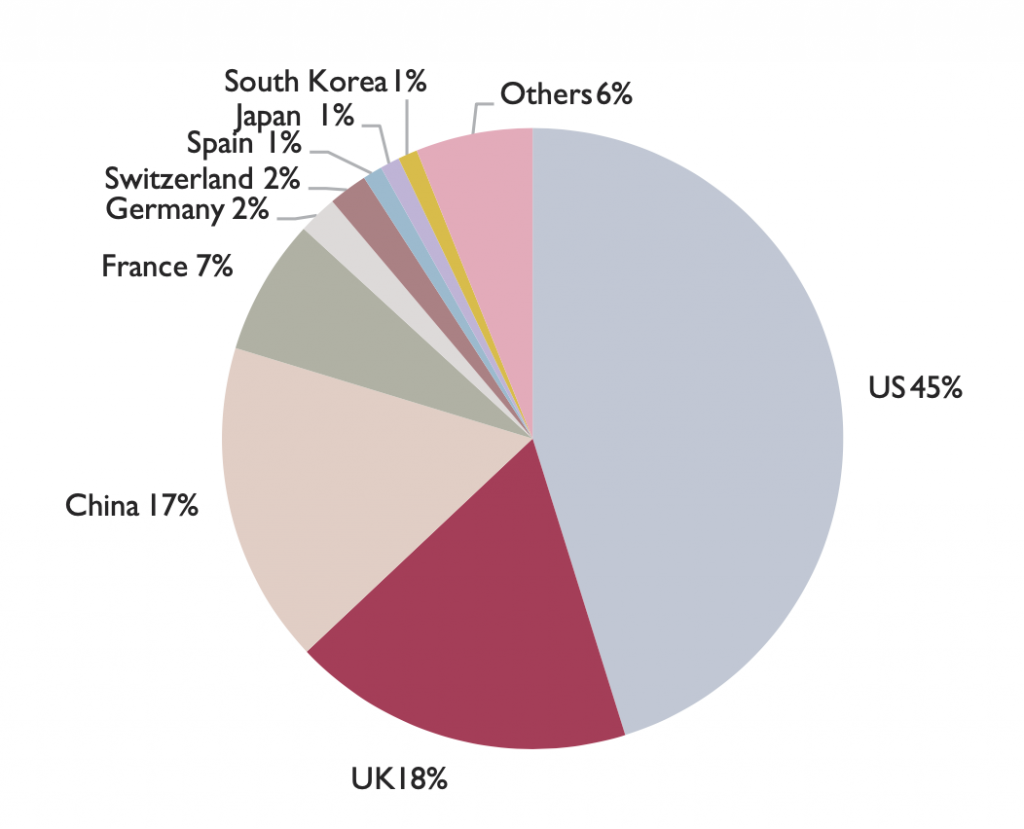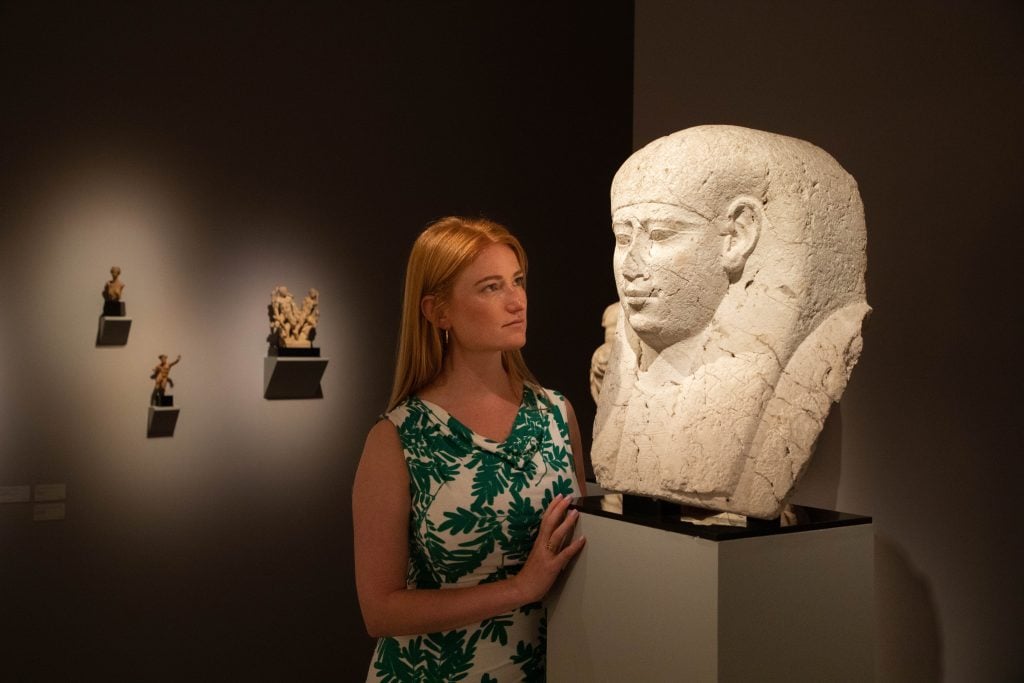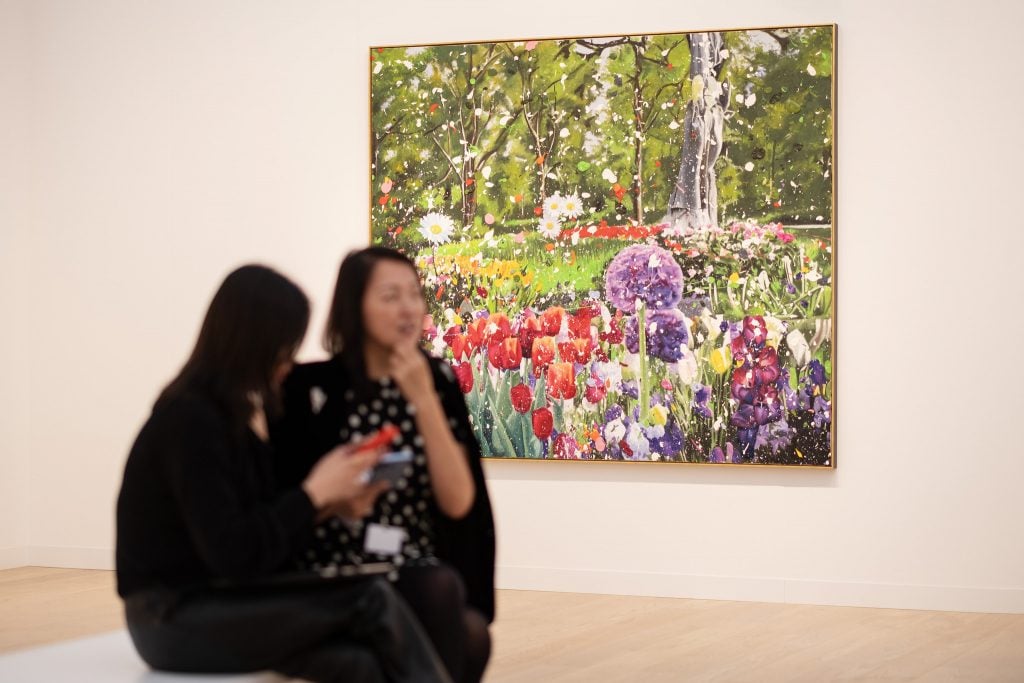Market
What is the State of the Post-Brexit British Art Market? Here Are 5 Takeaways From a New Report
The U.K.'s market share is still one of the world's biggest, but the picture is hardly rosy.

The U.K.'s market share is still one of the world's biggest, but the picture is hardly rosy.

Vivienne Chow

Concerns about future of the art market in the U.K. have occupied the industry over the past several years, as galleries, auction houses and collectors have faced economic hurdles caused by Brexit, the pandemic, and the war between Ukraine and Russia. But what exactly do the financial figures say?
The British Art Market Federation has commissioned Clare McAndrew’s firm Arts Economics, which also conducts the UBS Art Basel art market report, to dive deep into U.K. art market data. The result is the first of its kind financial report focusing on the British art trade since 2017. Here are five key takeaways.
The U.K.’s art market accounts for 18 percent of the global industry by value in 2022, according to the report, making it the world’s second biggest behind the U.S., which had a 45 percent share. It swapped positions with China, which came in second with 20 percent in 2021, when the U.K. occupied third place with 17 percent. China’s market share dropped to 17 percent in 2022, making it the world’s third largest.

Global Art Market Share by Value 2022. Source: British Art Market Report 2023. Courtesy British Art Market Federation and Arts Economics. © Arts Economics (2023).
The art world has been pivoting towards Paris in recent years, amid Brexit and the premiere of and welcome reception for the art fair Paris+ by Art Basel. International dealers have also been flocking to the city, further fueling the hype of Paris taking over London as Europe’s art market hub.
But Art Economics’s report suggests that the idea of Paris ousting London from its cultural throne is far from reality. France is the fourth biggest art market, but it only holds seven percent of the global share in 2022, less than half of that of the U.K. The U.K. also holds a bigger share than the European Union altogether, which had a 12 percent share in the same year.
Many industry players, from dealers to auction houses and art fair operators have been citing how Brexit has been affecting their businesses since the decision to leave the European Union came into effect in January 2020. But how bad is it?
The U.K. accounted for 20 percent of global art sales in 2020, the year when the country officially left the E.U. The country’s art market sales also hit the lowest in that year with a total at $9.9 billion.
The country’s art sales gradually picked up in 2021, totaling $11.4 billion, and inched forward to $11.9 billion in 2022. The market share percentage in 2021 (17 percent) and 2022 (18 percent), however, fell below that of 2020. It also remained below the pre-pandemic level of $12.2 billion in 2019.
The declining trend, however, began much earlier. In fact, since its 2008 peak, when the U.K. cornered 34 percent of the global art market, its share has been steadily dropping through to 2016, when it had a 21 percent portion.
By comparison, the U.S. market appears to be recovering well from the pandemic. From 2020’s $21 billion in art sales (a 42 percent share of the global market) its share rose to $28 billion in 2021 (43 percent) and $30.2 billion in 2022 (45 percent).

The Treasure House Fair, London. Courtesy of the Treasure House Fair.
The report also took stock of the sales of high value artworks, noting that the U.S., the U.K., and China, the world’s top three art markets, together accounted for 96 percent of the auction sales of lots over $1 million, with 32 percent of the lots priced at $10 million or more.
The U.K.’s share in this category has been declining, however. In 2022, 14 percent of the lots valued at more than $1 million were sold at U.K. auctions, and 13 percent were priced more than $10 million. The numbers were up slightly from 2021 but they were substantially lower than those in 2019, where the U.K. accounted for 19 percent of lots pricer over $1 million and 18 percent of those more than $18 million.
Global trade is decisive on whether a place can be an art market hub and this can be reflected by its imports and exports. Data from the U.N. Comtrade collected by Arts Economics showed that the U.K.’s imports of art and antiques dropped significantly after Brexit, from $3.2 billion in 2019 to $2.1 billion in 2020, dipping further to $1.9 billion in 2021 before climbing back up to $2.8 billion in 2022. The trend also corresponded to the decline of the U.K.’s global art market share.
Import and export data collected from the U.K. government’s customs bureau HMRC shows that the trade has been declining since 2019, with non-E.U. trade accounting for 55 percent of the imports and 71 percent of exports in 2022.

New works by Damien Hirst at Gagosian’s booth at Frieze London. Photo: Linda Nylind, courtesy of Linda Nylind/Frieze.
Although artworks can be brought in to the U.K. under temporary admission, dealers have said that the increasing red-tape for imports and exports of artworks after Brexit has made it more challenging to bring art to sell in the U.K. While places like the U.S. and Hong Kong, which is the main art trading hub of China, have no tariffs on art (but tariffs are applied on art imported from China to the U.S.), this is not the case in the U.K.
The U.K. government has vowed to review these measures in 2024.
More Trending Stories:
Art Critic Jerry Saltz Gets Into an Online Skirmish With A.I. Superstar Refik Anadol
The Old Masters of Comedy: See the Hidden Jokes in 5 Dutch Artworks
A Royal Portrait by Diego Velázquez Heads to Auction for the First Time in Half a Century
How Do You Make $191,000 From a $4 Painting? You Don’t
In Her L.A. Debut, South Korean Artist Guimi You Taps Into the Sublimity of Everyday Life
Two Rare Paintings by Sienese Master Pietro Lorenzetti Come to Light After a Century in Obscurity